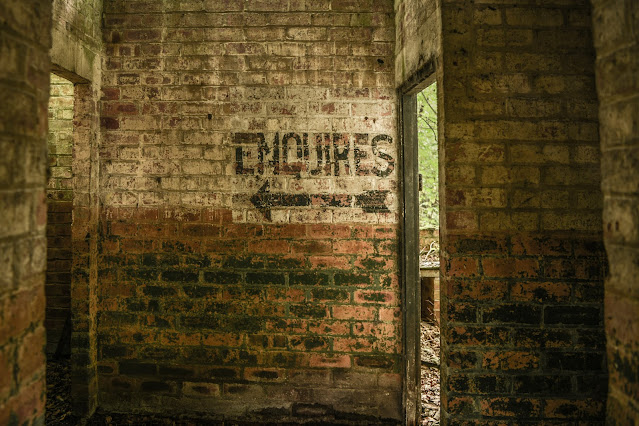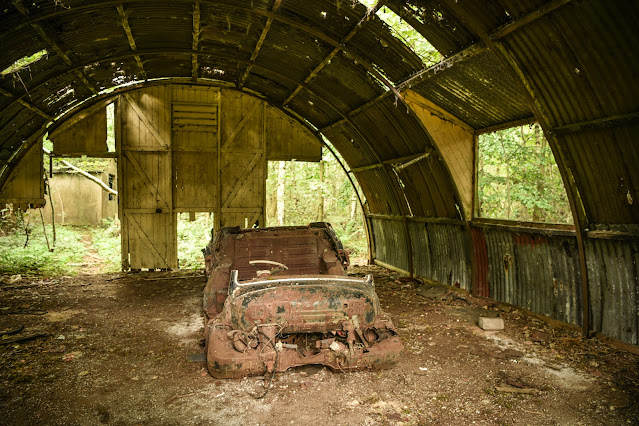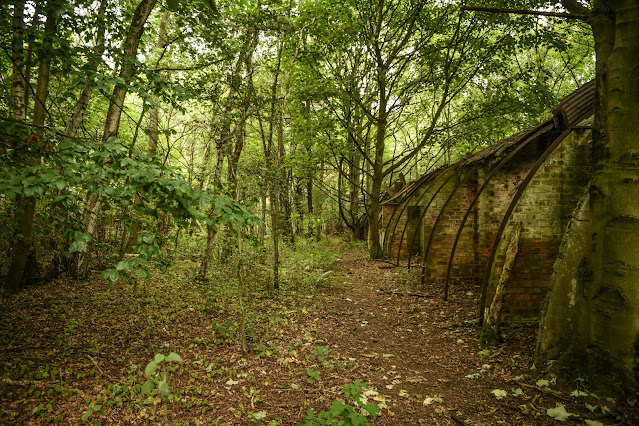Urban Exploring | Abandoned RAF Tilstock, Whitchurch, Shropshire.
 |
R.A.F Tilstock, Shropshire.
Ive often wondered as I drive past this mysterious looking place that always gives me weird vibes on the A49: What is it and why? So one day I stopped had a mooch and took a few snaps.
It started out as a training base for the British army in 1915 and in 1939 was used as an internment camp for screening German and Austrian refugees then later used as a prisoner of war camp until 1941.
It was later converted for the RAF with the addition of runways in 1942. The training of bomber pilots took place here in aircraft such as the Whitley, Halifax and Sterling.
Unfortunatly nothing remains of the aircraft but theres still a few old cars around Im guessing the one in the shots is an old Jensen.
Its a fascinating place which is now totally overgrown but I imagine it will have to make way to housing developments pretty soon.
RAF Tilstock, also known as Tilstock Airfield, was an airfield located near Whitchurch in Shropshire, England. It was originally constructed during World War II and was used by the Royal Air Force (RAF). Here are some key points about RAF Tilstock:
WWII Use: RAF Tilstock was built in 1942 as a satellite airfield for RAF Shawbury.
RAF Shawbury is a Royal Air Force station located near the village of Shawbury in Shropshire, England.
History: RAF Shawbury has a long history, dating back to its establishment in 1917 during World War I. It was originally known as "RFC Shawbury" when it served as a Royal Flying Corps (RFC) airfield. It continued its role as a training and operational airfield during World War II.
Training: One of the primary functions of RAF Shawbury is pilot and aircrew training. It serves as the home of the Defence Helicopter Flying School (DHFS), which provides rotary-wing (helicopter) training for all three branches of the UK armed forces (RAF, Royal Navy, and Army).
Helicopter Operations: The station is equipped with various types of helicopters used for training, including the Airbus H135 Juno and the Airbus H145 Jupiter.
Search and Rescue: In the past, RAF Shawbury was home to the Central Flying School (Helicopter), which played a crucial role in training search and rescue crews. However, the search and rescue function was later transferred to civilian agencies.
Current Status: As of my last knowledge update in September 2021, RAF Shawbury continued to play a significant role in the training of military helicopter pilots. It is possible that there have been developments or changes at the station since that time.
RAF Shawbury's primary focus on helicopter training makes it a vital facility for the UK armed forces and contributes to the development of skilled helicopter pilots for various military applications.
USAAF Use: In 1943, the airfield was taken over by the United States Army Air Forces (USAAF) and was known as USAAF Station 364. It was used as an auxiliary airfield for the 8th Air Force. During this time, it was used by American transport and troop carrier units.
Post-War Use: After the war, RAF Tilstock was returned to the RAF, and it continued to be used for various purposes, including as a storage depot and for training. It also played a role in the Berlin Airlift in 1948.
Closure: RAF Tilstock was closed as an active RAF station in the 1950s.
Current Status: The airfield is no longer in military use and has largely returned to agricultural use. Some of the original buildings may have been repurposed for civilian purposes.
by Simon Donnelly Photographer Birmingham
Black Country Nostalgia Award Winning Photography
Commercial Photography Birmingmam










Comments
Post a Comment